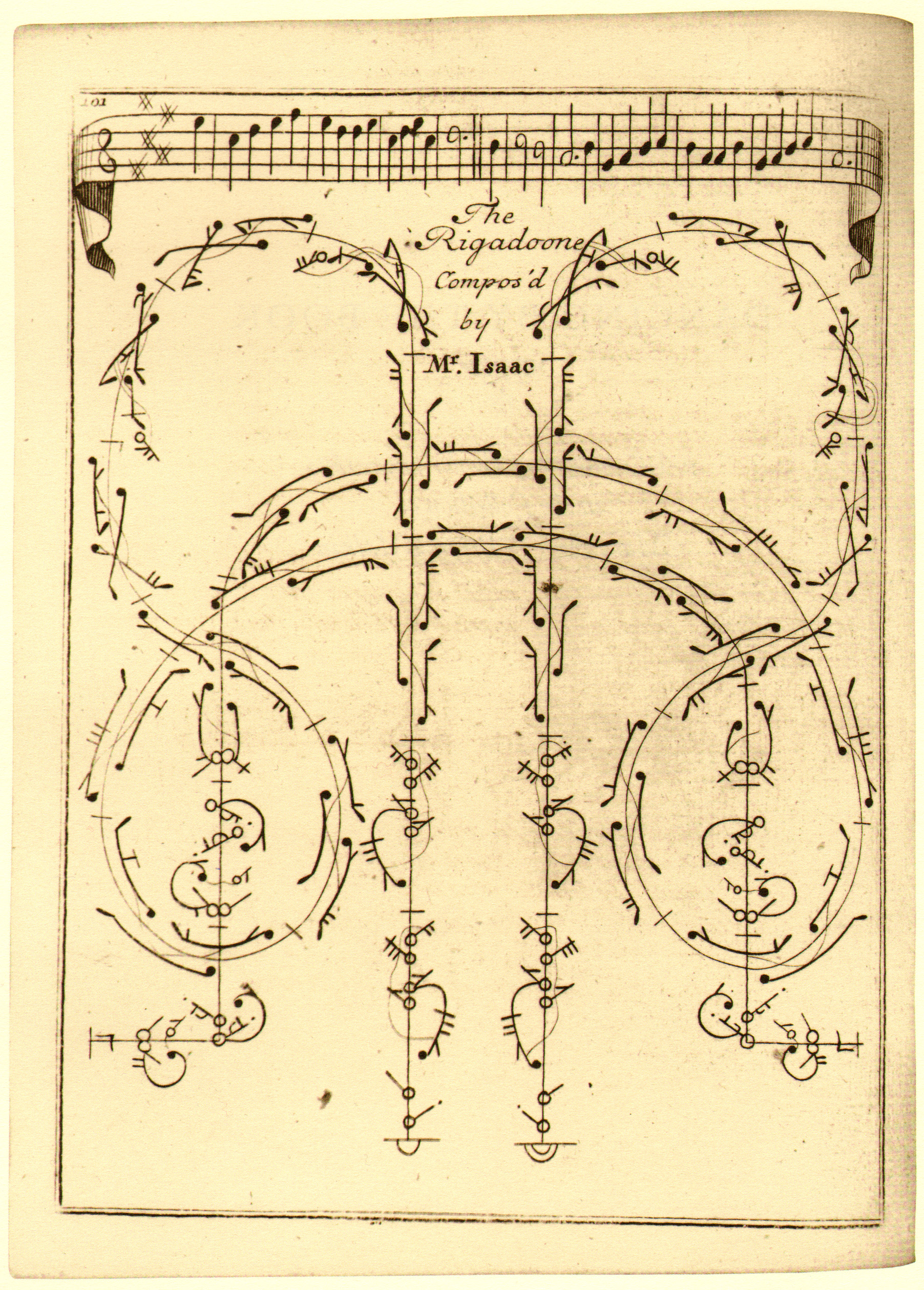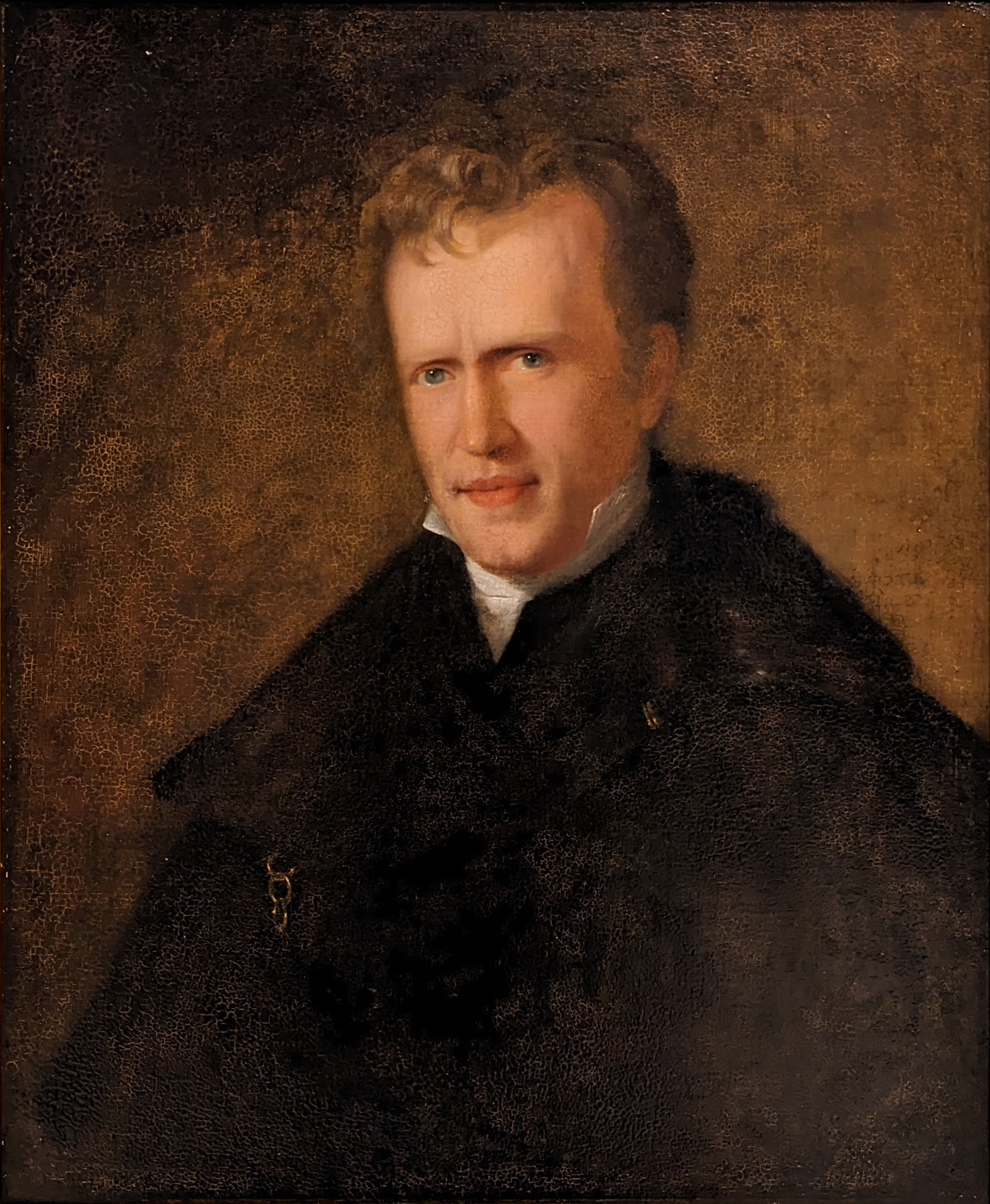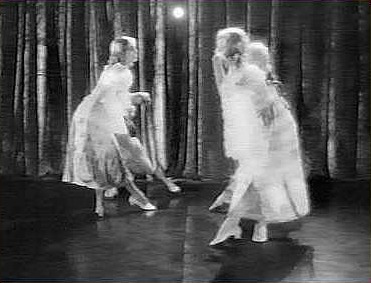|
Rigaudon
The rigaudon (, ), anglicized as rigadon or rigadoon, is a French baroque dance with a lively duple metre. The music is similar to that of a bourrée, but the rigaudon is rhythmically simpler with regular phrases (eight measure phrases are most common). It originated as a sprightly 17th-century French folk dance for couples. Traditionally, the folkdance was associated with the provinces of Vivarais, Languedoc, Dauphiné, and Provence in southern France, and it became popular as a court dance during the reign of Louis XIV of France, Louis XIV. Its hopping steps were adopted by the skillful dancers of the French and English courts, where it remained fashionable through the 18th century. By the close of the 18th century, however, it had given way in popularity as a ballroom dance (along with the passepied, bourrée, and gigue) to the minuet; however, in the 20th century, Maurice Ravel would employ this baroque dance in his piano suite ''Le Tombeau de Couperin''. Sources Further ... [...More Info...] [...Related Items...] OR: [Wikipedia] [Google] [Baidu] [Amazon] |
Le Tombeau De Couperin
''Le Tombeau de Couperin'' (''The Tomb of Couperin'') is a suite (music), suite for solo piano by Maurice Ravel, composed between 1914 and 1917. The piece is in six movements, based on those of a traditional Baroque music, Baroque suite. Each movement is dedicated to the memory of a friend of the composer (or in one case, two brothers) who had died fighting in World War I. Ravel also produced an orchestral version of the work in 1919, although this omitted two of the original movements. Overview The word ''tombeau'' in the title is a musical term popular from the 17th century, meaning "a piece written as a memorial". The specific Couperin, among a family noted as musicians for about two centuries, that Ravel intended to evoke is thought to be François Couperin "the Great" (1668–1733). Ravel stated that his intention was to pay Homage (arts), homage more generally to the sensibilities of the Baroque music, Baroque French keyboard suite (music), suite, not necessarily to imit ... [...More Info...] [...Related Items...] OR: [Wikipedia] [Google] [Baidu] [Amazon] |
Baroque Dance
Baroque dance is dance of the Baroque era (roughly 1600–1750), closely linked with Baroque music, theatre, and opera. English country dance The majority of surviving choreographies from the period are English country dances, such as those in the many editions of John Playford, Playford's ''The Dancing Master''. The descriptions in these various publications give the music, the formation, the number of dancers, and textual descriptions of the figures to be danced in relation to the musical bars, i.e. the floor patterns of the dances. There is only occasional indication of the steps used, presumably because they were well known. However, other sources of the period, such as the writings of the French dancing-masters Raoul Auger Feuillet, Feuillet and Lorin, indicate that steps more complicated than simple walking were used, at least some of the time. English country dance survived well beyond the Baroque era and eventually spread in various forms across Europe and its colonies, ... [...More Info...] [...Related Items...] OR: [Wikipedia] [Google] [Baidu] [Amazon] |
Feuillet Notation
Beauchamp-Feuillet notation is a system of dance notation used in Baroque dance. The notation was commissioned by Louis XIV (who had founded the Académie Royale de Danse in 1661), and devised in the 1680s by Pierre Beauchamp. The notation system was first described in detail in 1700 by Raoul-Auger Feuillet in ''Chorégraphie''. Feuillet also then began a programme of publishing complete notated dances. It was used to record dances for the stage and domestic use throughout the eighteenth century, being modified by Pierre Rameau in 1725, and surviving into at least the 1780s in various modified forms. One of the innovations of this notation was to show the music on a staff as a musician would use it, across the top of a page. Bar markings on the music are also drawn across the tract of the dancers, clarifying the relation of the steps to the music. The focus of the notation is the footwork. The notation shows the sequence of foot moves, and, for each move, the direction, the ma ... [...More Info...] [...Related Items...] OR: [Wikipedia] [Google] [Baidu] [Amazon] |
Thomas Nußbaumer
Thomas may refer to: People * List of people with given name Thomas * Thomas (name) * Thomas (surname) * Saint Thomas (other) * Thomas Aquinas (1225–1274) Italian Dominican friar, philosopher, and Doctor of the Church * Thomas the Apostle * Thomas (bishop of the East Angles) (fl. 640s–650s), medieval Bishop of the East Angles * Thomas (Archdeacon of Barnstaple) (fl. 1203), Archdeacon of Barnstaple * Thomas, Count of Perche (1195–1217), Count of Perche * Thomas (bishop of Finland) (1248), first known Bishop of Finland * Thomas, Earl of Mar (1330–1377), 14th-century Earl, Aberdeen, Scotland Geography Places in the United States * Thomas, Idaho * Thomas, Illinois * Thomas, Oklahoma * Thomas, Oregon * Thomas, South Dakota * Thomas, Virginia * Thomas, Washington * Thomas, West Virginia * Thomas County (other) * Thomas Township (other) Elsewhere * Thomas Glacier (Greenland) Arts and entertainment * ''Thomas'' (Burton novel), a 1969 nove ... [...More Info...] [...Related Items...] OR: [Wikipedia] [Google] [Baidu] [Amazon] |
Francis Lieber
Francis Lieber (18 March 1798 – 2 October 1872) was a German-American jurist and political philosopher. He is best known for the Lieber Code, the first codification of the customary law and the laws of war for battlefield conduct, which served as a basis for the Hague Conventions of 1899 and 1907 and for the later Geneva Conventions. He was also a pioneer in the fields of law, political science, and sociology in the United States. Born in Berlin, Prussia, to a Jewish merchant family, Lieber served in the Prussian Army during the Wars of Liberation against Napoleon Bonaparte. He obtained a doctorate from the University of Jena in 1820. A republican, he volunteered to fight on the Greek side in the Greek War of Independence in 1821. After experiencing repression in Prussia for his political views, he emigrated to the United States in 1827. During his early years in America, he worked a number of jobs, including swimming and gymnastics instructor, editor of the first editions ... [...More Info...] [...Related Items...] OR: [Wikipedia] [Google] [Baidu] [Amazon] |
Encyclopædia Americana
''Encyclopedia Americana'' is a general encyclopedia written in American English. It was the first general encyclopedia of any magnitude to be published in North America. With ''Collier's Encyclopedia'' and ''Encyclopædia Britannica, Encyclopedia Americana'' became one of the three major and large English-language general encyclopedias; the three were sometimes collectively called "the ABCs of encyclopedias". Following the acquisition of Grolier in 2000, the encyclopedia has been produced by Scholastic. The encyclopedia has more than 45,000 articles, most of them more than 500 words and many running to considerable length (the "United States" article is over 300,000 words). ''Americana'' is international in scope and is known for its detailed coverage of American and Canadian geography and history. ''Americana'' is also known for its strong coverage of biographies, as well as scientific and technical subjects. Written by 6,500 contributors, the ''Encyclopedia Americana'' inc ... [...More Info...] [...Related Items...] OR: [Wikipedia] [Google] [Baidu] [Amazon] |
The New Grove Dictionary Of Music And Musicians
''The New Grove Dictionary of Music and Musicians'' is an encyclopedic dictionary of music and musicians. Along with the German-language '' Die Musik in Geschichte und Gegenwart'', it is one of the largest reference works on the history and theory of music. Earlier editions were published under the titles ''A Dictionary of Music and Musicians'', and ''Grove's Dictionary of Music and Musicians''; the work has gone through several editions since the 19th century and is widely used. In recent years it has been made available as an electronic resource called ''Grove Music Online'', which is now an important part of ''Oxford Music Online''. ''A Dictionary of Music and Musicians'' ''A Dictionary of Music and Musicians'' was first published in London by Macmillan and Co. in four volumes (1879, 1880, 1883, 1889) edited by George Grove with an Appendix edited by J. A. Fuller Maitland in the fourth volume. An Index edited by Mrs. E. Wodehouse was issued as a separate volume in 189 ... [...More Info...] [...Related Items...] OR: [Wikipedia] [Google] [Baidu] [Amazon] |
Maurice Ravel
Joseph Maurice Ravel (7 March 1875 – 28 December 1937) was a French composer, pianist and conductor. He is often associated with Impressionism in music, Impressionism along with his elder contemporary Claude Debussy, although both composers rejected the term. In the 1920s and 1930s Ravel was internationally regarded as France's greatest living composer. Born to a music-loving family, Ravel attended France's premier music college, the Paris Conservatoire; he was not well regarded by its conservative establishment, whose biased treatment of him caused a scandal. After leaving the conservatoire, Ravel found his own way as a composer, developing a style of great clarity and incorporating elements of modernism (music), modernism, baroque music, baroque, Neoclassicism (music), neoclassicism and, in his later works, jazz. He liked to experiment with musical form, as in his best-known work, ''Boléro'' (1928), in which repetition takes the place of development. Renowned for his abi ... [...More Info...] [...Related Items...] OR: [Wikipedia] [Google] [Baidu] [Amazon] |
Minuet
A minuet (; also spelled menuet) is a social dance of French origin for two people, usually written in time. The English word was adapted from the Italian ''minuetto'' and the French ''menuet''. The term also describes the musical form that accompanies the dance, which subsequently developed more fully, often with a longer musical form called the minuet and trio, and was much used as a movement in the early classical symphony. While often stylized in instrumental forms, composers of the period would have been familiar with the popular dance. Dance The name may refer to the short steps, ''pas menus'', taken in the dance, or else be derived from the ''branle à mener'' or ''amener'', popular group dances in early 17th-century France. The minuet was traditionally said to have descended from the ''bransle de Poitou'', though there is no evidence making a clear connection between these two dances. The earliest treatise to mention the possible connection of the name to the ... [...More Info...] [...Related Items...] OR: [Wikipedia] [Google] [Baidu] [Amazon] |
Passepied
The passepied (, "pass-foot", from a characteristic dance step) is a French court dance. Originating as a kind of Breton branle, it was adapted to courtly use in the 16th century and is found frequently in 18th-century French opera and ballet, particularly in pastoral scenes, and latterly also in baroque instrumental suites of dances. In English the passepied has been spelled "paspy" as well as "paspie" or "paspe", phonetic approximations of the French pronunciation. History The earliest historical mention of the passepied was by Noël du Fail in 1548, who said it was common at Breton courts. François Rabelais and Thoinot Arbeau, writing later in the 16th century, identify the dance as a type of branle characteristic of Brittany. At this time it was a fast duple-time dance with three-bar phrases, therefore of the ''branle simple'' type. Like many folk-dances it was popular at the court of Louis XIV. The passepied was remodelled by Jean-Baptiste Lully as a pastoral conce ... [...More Info...] [...Related Items...] OR: [Wikipedia] [Google] [Baidu] [Amazon] |
Gigue
The gigue ( , ) or giga () is a lively baroque dance originating from the English jig. It was imported into France in the mid-17th centuryBellingham, Jane"gigue."''The Oxford Companion to Music''. Ed. Alison Latham. Oxford Music Online. 6 July 2008 and usually appears at the end of a suite. The gigue was probably never a court dance, but it was danced by nobility on social occasions and several court composers wrote gigues.Louis Horst, ''Pre-Classic Dance Forms'', (Princeton, NJ: Princeton Book Company, 1987), 54–60. A gigue is usually in or in one of its compound metre derivatives, such as , , or , although there are some gigues written in other metres, as for example the gigue from Johann Sebastian Bach's first ''French Suite'' (BWV 812), which is written in and has a distinctive strutting "dotted" rhythm. Gigues often have a contrapuntal texture as well as often having accents on the third beats in the bar, making the gigue a lively folk dance. In early French th ... [...More Info...] [...Related Items...] OR: [Wikipedia] [Google] [Baidu] [Amazon] |







